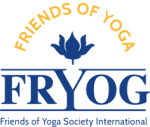The Light on the Yoga Sutra of Patanjali (Iyengar, 2002) is relevant to the role and practice of an effective teacher if we translate them to a different and more modern context of teaching within schools and colleges. They provide those aspects of self-discipline as well as an ethical code which can be adhere to, and in particularly in providing boundaries between the tutor and student for effective learning to take place. An outstanding teacher is a mentor who should follow and encourage the student by setting a positive example via embodying the two steps in the eight-fold path of yoga – the Yamas and Niyamas. In an attempt to define these in this blog, I have looked to my own anecdotal experience as a teacher of English, observances as a student and teacher of yoga as well as my own experiences as an adolescent.
What is on the whole, most important, is how such guidance from the Sutras are about respecting the individual integrity of both the teacher and student relationship. A good teacher should create independence of inquiry in the student, not dependence as this will provide an obstacle to effective learning. In quoting the author and meditation teacher, Phillip Moffat, ‘[g]ood fences make for good relations’ (Fahri, 2006: 763). My role as a teacher is to engender self-sufficiency in my students through independent learning techniques.
However, the two other most important observances of the Niyamas to me are ‘Svadahaya’ and ‘Ishwara Prandihara’ – the former is the teacher being the perpetual student who never loses the desire to learn in order to help themselves and their students develop, as outlined in the paragraph beneath. The latter, ‘Ishwara Pranidhana’ means that teachers must observe self-care and avoid burn-out from taking on too much responsibility – working smarter not harder. I have found that yoga and meditation has provided me with the emotional resilience to cope with the stresses and demands of teaching and to quote Eleanor Brownn, an inspirational international writer and coach, ‘Rest and self-care are so important. When you take time to replenish your spirit, it allows you to serve others from the overflow. You cannot serve from an empty vessel.’
From my own previous experience as a Teaching and Learning Coach who provided CPD training opportunities to help other college teachers to develop, I understand that this particular role has taught me that my own personal development involves the development of others which fits with the ‘Niyama’ of ‘Svadahaya’ or the teacher as student. All difficult situations or challenges that have arisen in my role as teacher interacting with young adults has allowed me to grow, for example, the challenges of the student/teacher dynamic. For me this has involved dealing with students where I have had to set clear boundaries. Originally I was motivated and inspired to be an English teacher because I was, what our current educational thinking would label as a ‘failure of aspiration’ – I dropped out of education and left home at the age of 16. When I qualified as an English teacher I wanted to guide and support adolescents when none was available to me when I was their age. Perhaps this altruistic desire to remove some of barriers preventing adolescents from engaging with education and to provide a positive role model by my own modelling. When I read The Bhagavad Gita (Eknath, 2007), I interpret Krishna’s words to Arjuna who faces the most challenging and defining battle of his entire life, that he must apply faith in action and through selfless duty. Teaching is very challenging, it is not simply about monetary reward, status or imparting knowledge but creating the potential in all individuals to grow. In observing and celebrating the student’s developing self-worth and the realization of their hopes, then the teacher can point the student toward his or her inner teacher, known…as the ‘Atman’ in yoga. Such satisfaction in the tutor is an expression or mirror of the teacher’s own self-realisation or as described in Bhagavad Gita, ‘Yoga is a journey of the self, through the self, to the self.’ In the Sutras this is defined through following a devoted path to emancipate oneself from attachment to selfish desire and aims – for the teacher, this is self-less reward to help our students.
The fact that teacher can exist in the mind of the student as a lifeline because of the guidance they offer means that it is important that specific boundaries are set by the teacher for effective learning in the student to take place In my experience as an educator in a college, such distinctions are craved by students who look for positive guidance where perhaps they may have had little or of the wrong kind. The yoga teacher, Fahri (2006) illustrates this by indicating that one of the biggest influences she has had was a former school teacher, Mrs Bunting, who balanced ‘discipline’ with ‘order’ (Fahri, 2006: 197) as well as Ray Worring, a geologist and psychologist, who helped her move beyond ‘self-limiting beliefs and habits’ (Fahri, 2006: 198) which one would define in much broader senses as kleshas or obstacles to learning (Iyengar, 2002). The student must feel that they have a trusting and mutually respectful relationship with the teacher as foundation of effective learning – in effect they must believe in the tutor and by which the methods they teach which stems from sincerity in how they project themselves as well as the limits of their knowledge (Satya). So what does a student need to progress, drawing on the ‘Yamas’ and ‘Niyamas’? They require to be encouraged positively, to be not placed on a lower-level than the tutor, to be treated with respect and fairly (Ahimsa), to have the teacher’s full attention, to have a teacher who is professional (Asteya), to be stretched enough so they are not bored in their progress (Tapas), and in order to learn their own self-care (Swadhyaya) on the road to individual development, is to be facilitated and guided by independent learning techniques (Aparigraha). The latter can be achieve by the teacher modelling a clear setting of boundaries and behaviours (Sauncha) in a detached manner but not so that it does not inhibit the student’s self-worth. As a college teacher, these aspects are clear to me in my professional role as my students are in ‘loco parentis’ so even when the student is a young adult (16-19), they are not responsible for setting boundaries but the teacher can educate them about their responsibilities, rights and what they are to expect from the teacher-student relationship. In my subject, English, I negotiate this in my first lesson with new students.
The greatest inspiration that has made me realize more the importance of my relationships with my students has come from my contact with Charlotta Martinus (founder of Teen Yoga) and from following the work of Sir Anthony Seldon, the outgoing head of Wellington College who pioneered ‘happiness’ lessons which has transformed the academic results since its introduction. He has practised yoga and meditation since 1978. His work has echoed much of my recent experiences in my college where there has been an unprecedented number of referrals to the resident Child Protection Officer and was the reason why I enrolled on the Teen Yoga CPD course in Camerton, Bath. Seldon recently claimed that “We have a ticking time bomb of mental health issues amongst the young, and schools are still not doing enough.” He also stated that the “obsession by government and Ofsted with exams results as the only validator of school success has prevented schools from doing more…If we are to avert a crisis in years to come, schools must put a much greater emphasis on sport and regular exercise.” (Telegraph, 31st Dec 2014). As a result, I have sought to use yoga when dealing with the challenges of many students living in difficult contexts or under pressure to academically succeed. Furthermore, I have learnt through yoga the importance of teenagers having meaningful connections with older mentors to create the best conditions for their development.
The best I can do as a yoga teacher is to honour and accept the changes and challenges of adolescence especially if I have the privilege of working with them at my college. Furthermore, Charlotta Martinus brought to my attention how yoga has help me to counteract some of the consequences of negative experiences that were laid down in my own adolescence which led to my mental and physical burnout at the age of 38 as an over-worked teacher. As an experienced tutor of 19 years working with the 16 to 19 age group, I have tried to understand many of the troubles adolescent teenagers go through in my effort to support them at a very challenging time physically and psychologically. For me, I see this role as nourishing and helping my own self-development as a person by helping students to develop greater self-care and resilience through yoga. In giving, I hope to receive the pleasure in helping others altruistically. To be a better teacher, I have found that reading and researching the physical and psychological effects of yoga (my ‘Swadhyaya’) is important not only to convince schools of the benefits but to understand better how students can learn. For example, yoga can create stronger neural connections which in turn fosters self-understanding as well as self-regulation, which teenagers need as they are more likely to be involved in risk taking behaviours as they explore the world outside their comfortable nest in preparation for the move towards adulthood. Yoga creates a calmer, contented and more integrated individual because it focuses attention to the present moment. I was introduced to this particular research in studying the inspirational work of Dan Siegal in his book Brainstorm: The Power and Purpose of the Teenage Brain (2014).
However, this does not mean that my path to want to help teenagers is not without challenges. My journey to be a good English teacher even after 19 years will never be complete and is not a finished project. Though much of the ‘Yamas’ and ‘Niyamas’ are very similar to and could be easily translated into the teacher professional code of conduct, which I have always adhered to, and which I feel fairly conversant with under the two areas, ‘classroom management’ and ‘Child Protection’ (the legal responsibilities as a teacher), I am still not without my own shortcomings. I am neither the most experienced as an English or Yoga Teacher, so if any of this blog has stuck a cord in terms of misinterpretation of the sacred yoga texts, I will happily stand corrected. However as an English teacher, I see my own allegorical readings in texts and rather than viewing yoga as a spiritual path, I see it as a practical and philosophical guide to living. I take comfort from all forms written texts from literature, philosophy, and psychology in offering guidance. In this particular instance, I am taking guidance from some of the most important sacred texts of yoga.
The biggest challenge and barrier to being an effective teacher is time and experience which all teachers are willing to commit to passionately – this is my own ‘Svadahaya’ (Niyama). However, when I look back on my teacher training in 1997, which was for one year, it did not prepare me for the life of an English tutor. It has taken years of experience, trial, failure and small successes to come to the position I find myself in now. To help me on this, I must let go of my ego (‘Asmita’) and any self-comparisons (‘Asteya’) to other teachers. Yoga has taught me that what I hope to offer is individual to who I am in my path to become a teacher. As I was once an adolescent myself, I can see how I can help young adults.
References:
Easwaran, Eknath. (2007). The Bhagavad Gita. Berkeley: Nilgiri Press.
Farhi, D. (2006). Teaching Yoga: Exploring the Teacher-Student Relationship. Berkeley: Rodmell Press.
‘Heads Warn of Ticking Time-Bomb in Schools’ in The Telegraph. (2014) 31st December [online] Available at:< http://www.telegraph.co.uk/education/11320091/Head-warns-of-ticking-time-bomb-in-schools.html> (Accessed 8th July, 2015)
Iyengar, BKS. (2002). Light on the Yoga Sutra of Patanjali. London: Thorsons.
Siegal. D. (2014). Brainstorm: The Power and Purpose of the Teenage Brain. New York: Jeremy P. Tarcher.





